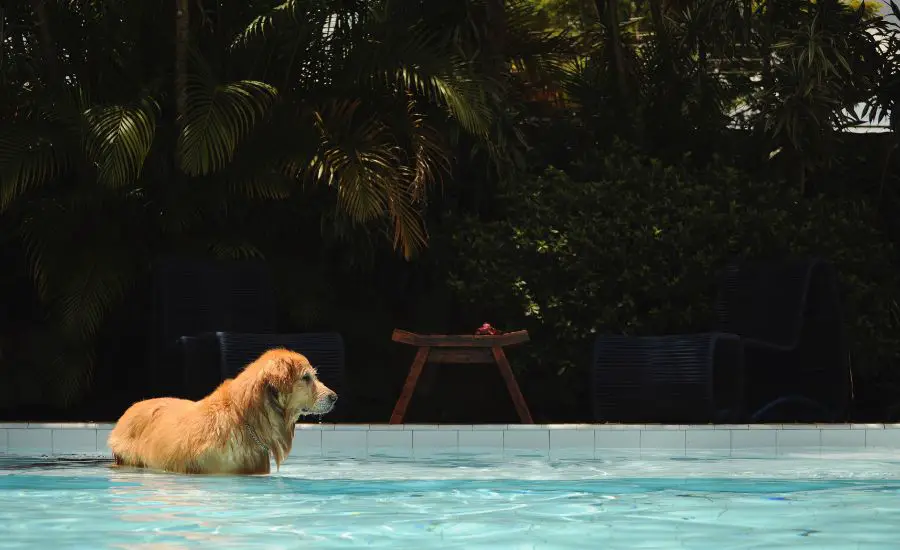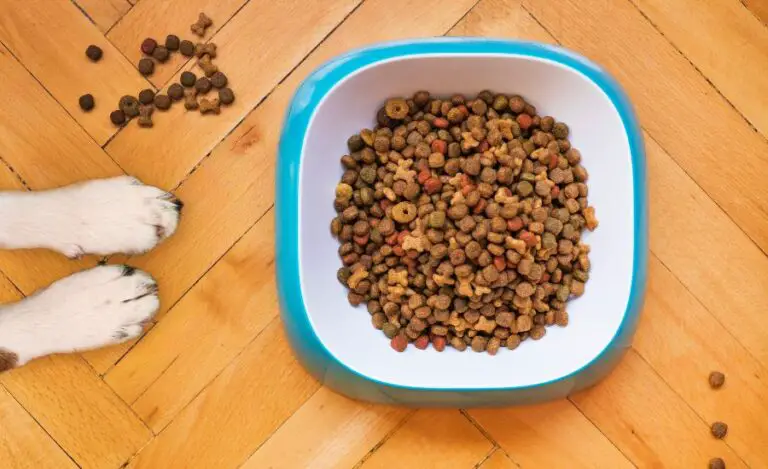How Hot Is Too Hot For Golden Retriever?

The iconic golden coat of the Golden Retriever not only contributes to their beauty but also serves as a vital component of their physiology. However, their thick double coat can make them susceptible to heat-related issues.
As responsible pet owners, it’s crucial for you to understand how hot is too hot for your Golden Retriever to ensure their well-being.
In this article, I will guide you with some of the key points and steps you can take to keep your dog comfortable in this hot weather.
Understanding the Golden Retriever Coat
The iconic golden coat of the Golden Retriever not only contributes to their beauty but also serves as a vital component of their physiology.
However, this double coat can pose challenges, particularly in warmer climates, as it affects the dog’s ability to regulate body temperature effectively.
Let’s delve into the intricacies of the Golden Retriever coat and how it influences their susceptibility to overheating.
1. The Double Coat Composition
- Outer Coat: The outer coat is characterized by longer, coarser guard hairs that provide protection from environmental elements. These guard hairs help repel dirt, water, and other debris. This outer layer acts as a barrier, shielding the inner coat and skin from external factors.
- Inner Coat: The inner coat, also known as the undercoat, is softer, denser, and more insulating. Its primary purpose is to regulate body temperature. During colder months, the undercoat traps air close to the body, providing insulation against the cold. In warmer weather, the undercoat can pose challenges, as it can retain heat and inhibit proper cooling.
2. Implications for Overheating On Golden Retrievers Health
While the double coat design is beneficial for Golden Retrievers in colder climates, it can make them vulnerable to heat-related issues in warmer temperatures. Here’s how the coat’s composition affects their susceptibility to overheating:
- Insulation: The dense undercoat that serves as insulation against cold weather can trap heat in hot conditions. This can lead to an increase in body temperature, resulting in discomfort, exhaustion, and even heatstroke.
- Heat Trapping: The outer guard hairs can limit the effectiveness of evaporative cooling. Evaporative cooling occurs when moisture on the skin’s surface evaporates, taking away excess heat. The outer guard hairs can hinder this process by preventing moisture from evaporating quickly.
How Golden Retrievers Coat Works In Cold Weather?
During colder months, the undercoat provides a valuable layer of insulation. If you’ve ever noticed your Golden Retriever seemingly unaffected by chilly weather, it’s because their undercoat traps warm air close to their body, allowing them to stay comfortable.
How Golden Retrievers Coat Works In Hot Weather?
In hot weather, the dense undercoat can become problematic. For instance, even if your Golden Retriever finds shade, the undercoat may continue to trap heat close to its body, making it challenging for them to cool down effectively. Panting becomes their primary means of cooling, and in extreme cases, this may not be sufficient.
Here, you can partially shave your Golden Retriever coat but keep in mind that regular trimming can put your furry friend at greater risk of health problems like skin cancer, skin itches or sometimes bleeding due to rubbing.
How Hot Is Too Hot For My Golden Retriever?
A temperature around 60°F (15.55°C) to 80°F (26.5°C) is ideal for golden retrievers to live comfortably but anything above 85°F (26.5°C) can be considered too hot for a Golden Retriever.
However, keep in mind that factors like humidity and individual sensitivity can influence their comfort level. It’s essential to monitor your dog’s behaviour and take precautions to prevent overheating in warm weather.
6 Signs of Heat Stress You Must Know About Golden Retrievers
It’s essential to recognize the signs of heat stress in your Golden Retriever to take timely action. Some common symptoms include:
- Excessive Panting: If your dog is panting heavily and excessively, it’s a sign that they’re trying to cool down. However, if the panting becomes rapid and labored, it could indicate heat stress.
- Lethargy and Weakness: If your usually energetic Golden Retriever appears lethargic, weak, or uninterested in activities, it could be due to overheating.
- Drooling and Thick Saliva: Excessive drooling or thick, ropey saliva can be a sign of heat stress. This occurs as your dog’s body tries to cool itself down.
- Gums and Tongue: Look at your dog’s gums and tongue. If they’re bright red, pale, or bluish, it indicates a potential heat-related issue.
- Vomiting or Diarrhea: Heat stress can lead to gastrointestinal distress. If your dog vomits or has diarrhea, it’s a cause for concern.
- Unsteady Gait: Heat stress can also affect your dog’s coordination and balance. An unsteady gait could signal overheating.
7 Steps To Preventing Overheating For Golden Retrievers
- Stay Hydrated: Keep a bowl of fresh, clean water available at all times. Consider placing multiple water stations around your home and yard to encourage hydration.
- Ice Treats: Offer ice cubes or frozen dog-safe treats to help cool your Golden Retriever from the inside out.
- Avoid Overexertion: During hot weather, opt for shorter and less intense walks. Allow your dog to rest in the shade when needed.
- Walk During Cooler Times: Schedule walks during the cooler parts of the day, such as early mornings or late evenings, when temperatures are lower.
- Cooling Mats or Pads: Provide your dog with a cooling mat or pad to lie on. These are designed to dissipate heat from their body and provide relief.
- Limit Sun Exposure: Keep outdoor playtime limited and provide shade in the form of trees, umbrellas, or outdoor shelters.
- Use Sunscreen: If your Golden Retriever has a light-colored coat or exposed skin, apply a dog-safe sunscreen to protect them from harmful UV rays.
How To Keep Your Golden Retriever Comfortable?
- Ventilated Spaces: Ensure that your home is well-ventilated. Use fans or air conditioning to maintain a cool and comfortable indoor environment.
- Cool Baths: Give your dog a cool bath or use a damp cloth to wipe them down. Avoid using very cold water, as it can shock their system.
- Groom Regularly: Regular grooming helps remove excess fur, allowing for better air circulation and heat dissipation. However, avoid shaving your Golden Retriever’s coat too short, as it provides sun protection.
- Frozen Treats: Make frozen treats using dog-friendly ingredients like yogurt and fruit. These treats not only cool down your dog but also provide mental stimulation.
- Create a Chill Zone: Set up a comfortable indoor space with a fan or air conditioning for your dog to relax during the hottest parts of the day.
- Indoor Play: Engage your dog in indoor games or activities to keep them entertained without exposing them to excessive heat.
- Stay Informed: Keep an eye on weather forecasts and temperature fluctuations. If a heatwave is predicted, take extra precautions to ensure your dog’s safety.
What Are The Emergency Measures You Can Take?
- Know the Signs: Be familiar with the signs of heatstroke, such as rapid panting, vomiting, glazed eyes, and collapse. If you suspect heatstroke, seek immediate veterinary attention.
- Cooling Techniques: If your dog shows signs of overheating, wet their paws, ears, and belly with cool (not cold) water. Use a fan to facilitate evaporation.
- Seek Veterinary Help: If your Golden Retriever’s condition worsens or if you’re unsure about their well-being, consult a veterinarian promptly.
Final Words
Caring for your Golden Retriever during hot weather requires vigilance and dedication. By following these preventive measures and comfort-enhancing tips, you can ensure that your furry companion remains safe, healthy, and content even in the hottest months.
Prioritize their comfort, monitor their behavior, and adapt your routines to accommodate their needs. Your efforts will contribute to a happy and thriving relationship with your beloved Golden Retriever.




